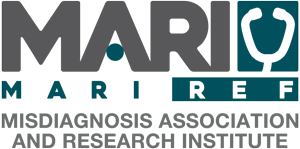Author: Celine Yeung
Editor: Dina Abbas
Overview
Head and neck cancers are the 6th most common human cancer and up to 48% of head and neck cancer cases are due to oral cancer (Irani, 2020). Oral cancer, or mouth cancer, affects the oral regions including the lips, tongue, gums and the roof of the mouth (Minić et al., 2018). Only half of the patients survive the next five years; however, survival rates can increase up to 85% with early detection and treatment (Lewis, 2018; Minić et al., 2018).
What Causes Mouth Cancer?
Mouth cancer is caused by DNA mutations in the oral mucosa (Irani, 2020). Some mouth cancers can arise from apparently normal mucosa while others can arise from pre-existing oral conditions that can potentially become tumours (Lewis, 2018). As such, regular assessment from a dental professional is important to assess any abnormalities within the mouth and neck (Lewis, 2018).
Symptoms
The symptoms of mouth cancer include:
- Persistent red or white coloured lumps in the mouth
- Non-healing ulcers
- Toothache
- Stiff jaw
- Swallowing difficulties
- Breathing difficulties
- Burning or discomfort in the mouth
- Ear pain
- Enlarged lymph nodes of the neck (Minić et al., 2018)
Risk Factors
The risk factors of mouth cancer include:
- Consumption of alcohol and tobacco
- Betel nut consumption
- HPV infection (primarily types 16 and 18)
- Chronic inflammation
- Ultraviolet (UV) radiation (for lip cancer)
- Immune deficiency
- Genetic predisposition
- Precancerous lesions
(Ferri & Rathore, 2021; Irani, 2020)
How does my Doctor know it is Mouth Cancer?
Early detection and treatment can significantly improve the prognosis of mouth cancer so it is critical for dentists to perform regular oral examinations to identify any abnormalities in the oral cavity (Lewis, 2018).
Extra-oral examinations involve physical examination of the ears, nose, and neck to detect any swelling or enlargement of the lymph nodes, as well as an assessment of the cranial nerve function through a series of tests to assess hearing, taste, eye acuity and movement, and facial and shoulder movements (Ferri & Rathore, 2021; Lewis, 2018). Intra-oral examinations involve examination of the entire mouth and the oropharynx, which is the part of the throat at the back of the mouth (Lewis, 2018).
A biopsy is the gold standard investigation and involves taking a tissue specimen from suspicious oral regions for examination (Lewis, 2018). The biopsy is usually done by an oral and maxillofacial surgeon and it is important that the tissue sample taken is of adequate size and depth for proper diagnosis (Rao et al., 2020; Wong & Wiesenfeld, 2018).
The procedure involves the administration of an anesthetic solution adjacent to the biopsy site to numb the area before taking a specimen using a scalpel. Normal mucosa adjacent to the suspicious lesion is also included in the specimen for comparison (Rao et al., 2020). Computed tomography (CT) or magnetic resonance imaging (MRI) scans of the head and neck and a chest x-ray may also be done. A positron emission tomography (PET) scan is used in case of advanced cancer (Ferri & Rathore, 2021).
Treatment
Surgical excision to remove the tumour is the main strategy for mouth cancer when the tumour is less than 2 cm in diameter (Ferri & Rathore, 2021). More advanced tumours will be followed up with radiation with or without chemotherapy (Ferri & Rathore, 2021).
Radiation therapy involves using high-energy radiation such as X-rays to destroy or damage the cancer cells (Wong & Wiesenfeld, 2018). The treatment period often lasts six weeks (Wong & Wiesenfeld, 2018). Cisplatin, a chemotherapeutic drug, is the main drug used in combination with radiation (Hartner, 2018; Wong & Wiesenfeld, 2018).
After treatment, supportive care is often required such as reconstructive surgery to rebuild the area(s) of the mouth that had been surgically removed, speech prosthesis to help with speaking, and speech and swallowing therapy (Ferri & Rathore, 2021).
References
